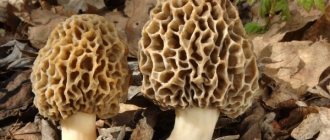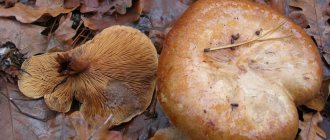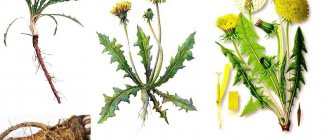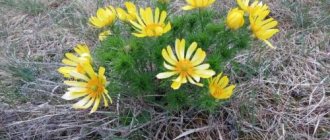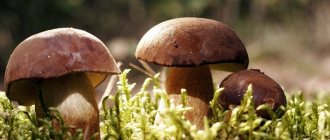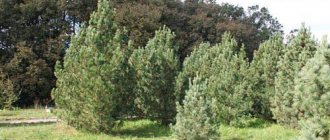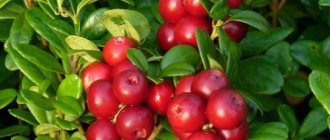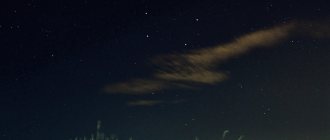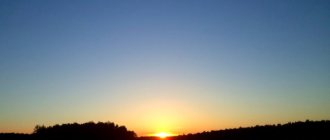We are glad to welcome you to the blog. The mushroom season is in full swing, so our topic today will be edible mushrooms, the photo and name of which you will find below. There are many types of mushrooms in our vast country, so even experienced mushroom pickers cannot always distinguish edible from inedible. But false and poisonous species can spoil your dish, and in some cases even cause death.
In the article you will learn what edible mushrooms are, what types they are divided into, where they grow and what they look like, which mushrooms appear first. I will tell you what benefits they bring to your body and what their nutritional value is.
Classification
All mushrooms are divided into three main sections: edible, conditionally edible, inedible (poisonous, hallucinogenic). These are all cap mushrooms; they make up only a small part of the vast kingdom.
They can be divided according to many criteria. The structure of the cap is of greatest importance to us, since sometimes it is different in twins. Divided:
- tubular (spongy) – the bottom of the cap consists of tiny tubes, reminiscent of a sponge;
- lamellar - plates at the bottom of the cap, located radially;
- marsupials (morels) – wrinkled caps.
You can also divide forest gifts by taste, by the method of spore formation, shape, color, and the nature of the surface of the cap and stem.
When and where do mushrooms grow?
In Russia and the CIS countries, mushroom areas are found almost throughout the entire territory, from the tundra to the steppe zones. Mushrooms grow best in soil rich in humus, which warms up well. Forest gifts do not like severe waterlogging and excessive dryness. The best places for them are in clearings where there is shade, on forest edges, forest roads, in plantings and copses.
If the summer turns out to be rainy, you should look for mushroom places at higher elevations, and if it’s dry, near trees in the lowlands, where there is more moisture. Typically, specific species grow near certain trees. For example, camelina grows in pine and spruce trees; white - in birch, pine, oak; boletus - near aspen.
Mushrooms appear in different climatic zones at different times, one after another. Let's look at the middle strip:
- The first spring forest harvest - stitches and morels (April, May).
- In early June, boletus, boletus, aspen, and russula appear. Wave duration is about 2 weeks.
- From mid-July, the second wave begins, which lasts 2-3 weeks. In rainy years there is no break between the June and July waves. In July, the mushroom harvest begins to appear on a massive scale.
- August is marked by massive growth of mushrooms, especially porcini mushrooms.
- From mid-August to early autumn, chanterelles, saffron milk caps, and milk mushrooms grow in huge families when the weather is favorable.
In deciduous forests the main season lasts from June to October, and from November to March the winter mushroom can be found in the forests. In the steppes, field mushrooms are more common: umbrellas, champignons, puffballs, meadow mushrooms. Season: June to November.
Composition of mushrooms, benefits
The mushroom composition contains up to 90% water, and the dry part is predominantly protein. That is why the gifts of the forest are often called “forest meat” or “forest bread”.
The nutritional value:
- Mushroom protein contains almost all amino acids, and even essential ones. Mushrooms are an important part of the diet, however, due to the fungin content, it is better to exclude them from the menu for people suffering from kidney, liver and gastrointestinal diseases.
- There are much fewer carbohydrates in “forest meat” than protein. Mushroom carbohydrates differ from plant carbohydrates and are better absorbed, much like milk or bread carbohydrates.
- Fatty substances are absorbed like animal fats by 92-97%.
- The composition contains tartaric, fumaric, citric, malic and other acids.
- The composition contains a large amount of vitamins PP, B1, A. Some varieties contain B2, C, D.
- Mushrooms are rich in iron, phosphorus, calcium, sodium, potassium.
- The composition contains microelements - zinc, fluorine, manganese, iodine, copper.
Edible forest products have many benefits; since ancient times they have been used to treat diseases. Nowadays it is a healthy and tasty food, and vegetarians replace meat with it.
Mushrooms can boost immunity, cleanse blood vessels and lower cholesterol levels, fight depression and excess weight. They help maintain the beauty of hair, skin and nails. Read more about contraindications and beneficial properties of mushrooms on our website.
Three tips on how to distinguish an edible mushroom from a poisonous one
Whether fresh or roasted, many wild mushrooms make their way from the forest to the table, but know which ones are safe when picking this summer delicacy.
The average person tends to use color or shape to figure out whether a mushroom is edible or not, but these are the two most variable factors. The color changes and may fade over time, and the size and shape will be within a certain range, but this is not one of the first things you should use as identifiers.
Large and small mushrooms appear “anywhere there is soil, wood or plants,” including lawns and pastures, forests and swamps, even planters. Nearly 2,000 major species have been identified on the prairies, and countless others remain unknown.
While the idea of eating mushrooms does have a certain nuisance factor—after all, mushrooms are the culprit behind infections like athlete's foot and plant diseases like powdery mildew and canola blackleg—there are some upsides to the diet. Various types have health benefits, such as protein and antioxidants.
You can never take a piece of wood and get beneficial plant compounds out of it, but you can take a mushroom from that piece of wood and get the chemicals out by brewing a tea or cooking them in a stew.
Mushrooms are divided into three categories: edible, poisonous and inedible. Mushrooms commonly classified as edible include button mushrooms, some (but not all) of the species found in lawn fairy rings, button mushrooms, portobello mushrooms, and creminis mushrooms.
Mushrooms that can be eaten come in a variety of flavors, ranging from mild to earthy, and are best cooked in sautés, casseroles, or pan frying.
“Many people are great at absorbing any flavors added to a dish.”
Inedible mushrooms do not cause disease, but are still unappetizing due to their tough, leathery texture and unpleasantly pungent or mild flavor. Some, like the crunchy chaga mushroom that grows on birch trees, can be made from tea and herbal extracts.
Poisonous mushrooms contain toxins to protect against hungry animals. Commonly mistaken for edibility are the fly agaric, a large, showy group of mushrooms often covered with warts that range in color from pure white to dark brown. In autumn you can find the fly agaric, a yellow-orange member of the fly agaric family.
“People will eat fly agarics because they don’t taste bad and they look edible; “but even if they taste good or you see insects eating them, that doesn’t mean the mushrooms are safe to eat.”
When collecting mushrooms, follow these rules:
“Don't eat anything you're not sure about. There is no universal rule for distinguishing a poisonous mushroom from an edible one because there is so much variety.”
Narrow Your Mushroom Focus
Become familiar with one or two edible mushroom species at a time and only look for those. For example, I learn about morel mushrooms and all their look-alikes so that I can safely pick them. Then I'll start adding other mushrooms to my repertoire.
How to determine if a mushroom is edible or not
How to distinguish edible mushrooms from inedible ones? After all, almost everyone knows boletus mushrooms, but rare and unusual specimens are found in the forest. There are many ways.
For example, as a child I had an interesting encyclopedia with pictures and descriptions, plus I always went into the forest with experienced mushroom pickers. By the way, this is the best idea to take with you into the forest a person who understands mushroom matters.
Some general tips:
- Take a closer look, if you see worms in at least one mushroom from the mycelium, they are edible.
- Tubular species are easier to distinguish from their twins.
- Study the colors, white and greenish often indicate a poisonous counterpart.
- Don't taste the mushrooms; they are not always bitter; for example, toadstool is a little sweet. Such an experiment could result in poisoning.
- A skirt is often found on false and poisonous lookalikes.
This is only a small part of the signs. Basically, each pair of doubles has its own differences. You should pay attention to the frequency of the plates at the bottom of the cap, attachment to the stem, color, pulp when cut, the presence of rings. Below you will find a photo and name of edible mushrooms with a short description.
What do edible mushrooms look like?
White mushroom (boletus)
The mushroom king has a light stalk, the sponge under the cap is cream and white. If you break the cap, it will not darken. He has several false and poisonous twins. For example, the broken leg of a satanic mushroom will turn blue, while that of a gall mushroom will turn pink, and the broken leg will be covered with a dark mesh.
Boletus (redhead)
In most cases, the boletus has a red cap, dense flesh and a leg. When broken, the cut is bluish or white, while the false redhead is red or pink.
Boletus (boletus)
The color of the cap varies from dark brown to light beige. The birch tree has an elongated leg with a gray mesh, and does not change color when cut. The false mushroom has a dirty white or pink sponge, and its cap is gray or pinkish.
Dubovik
A rather massive mushroom with a velvet pillow-shaped cap and lemon-yellow flesh. The stem is red at the base and turns blue when cut. It is confused with the satanic mushroom, but it is lighter in color.
Chanterelles
A real chanterelle is pale pink to orange in color, its edges are wavy, corrugated, and there are plates under the cap. In the false version, the color ranges from orange to red. The edges are jewel-smooth, and when broken, white juice is released.
Butter
Butterwort is a yellow mushroom with a slippery spongy cap, which is connected to the stem by a film. False butterflies have a dark cap, sometimes with a purple tint, with plates underneath it. The skin of the latter does not stretch when removed, and the flesh turns red.
Mosswort
The flywheel is spongy, the sponge is bright yellow. In “youth,” its cap is convex and velvety, but over time, it straightens and cracks. Its color ranges from dark green to burgundy. The leg does not have any special inclusions, and when broken, the color does not change. It is often confused with pepper, gall and chestnut mushrooms. The main difference between the moss fly is that it grows on moss.
Champignon
The original has a beige or cream color, dark brown plates and a skirt. Champignon grows in well-lit places. The popular mushroom can be confused with the toadstool or the stinking fly agaric, which are deadly poisonous. The toadstool has light plates, but no skirt under the cap.
Honey mushrooms
Honey mushrooms come in light cream and brown shades, they have skirts on their legs, and scales on their caps; they are plate-like and grow on stumps. False honey mushrooms are brighter, they do not have a film ring.
Russula
Young russulas have a spherical cap, while mature ones are flat, dry to the touch, matte or shiny. The color changes from green to red. The plates are fragile, different in size, frequent, yellow or white. The pulp is fragile white, changes color when cut. If the russula is bright red or purple, most likely you have a doppelganger.
Raincoat (hare potato, powder coat)
A real raincoat is shaped like a ball, often on a small stem. Its color is white or beige. The pulp is dense, white. The flesh of the false raincoat has a purple tint and the skin is dark.
Saffron milk caps
They often grow near pines and larches. Over time, the hat begins to resemble a funnel, its color is orange, red or bluish-green. It's smooth and sticky. The cut becomes green over time.
Volnushka pink
It has a flat pink cap with a recess in the center and a discreet circle pattern, its edges are curved inward. The pulp is white, dense, the juice is also white. The color does not change when cut. Lookalikes often have scales and a greenish color, different from the white flesh.
Cobweb (swampweed)
It has a beautiful appearance, bright yellow color. The shape of the cap is regular, round, it hides the plates. An adult web spider resembles a toadstool. False lookalikes have an unpleasant odor, are irregular in shape, and are covered in scales.
Umbrella
The umbrella got its name due to its long leg and characteristic shape of the cap, at first it is spherical in shape, then it resembles an umbrella. The color is white with a hint of beige, there is a darker spot in the center and the surface is cracked. The plates darken with age. There are many lookalikes that differ in color, may have a pungent odor and loose flesh.
Talkers
The talker's cap initially has a hemispherical shape, then a depressed shape, reminiscent of a funnel. It is dry and smooth, white, light brown, ocher in color, the center is darker. The plates are white, but darken with age. The pulp is white, dense, although it loosens with age. False talkers are white in color.
Rows
Lamellar mushrooms deserve their name because they grow in rows or circles (witch's circles). The young row's hat resembles a ball and then straightens out. It has white, brown, red, yellow colors. The edges can be curved, smooth, or curved. The skin can be dry, velvety or smooth, slimy. The leg is velvety and often has a pink-brown color. The poisonous doppelgänger is a dirty gray color, so be careful!
lines
It is more often found in pine forests; due to possible frosts, black spots appear on its cap. The cap itself is fused with the stem and has a sinuous shape. It has a brown, brown, reddish or yellow color. The older the line, the lighter the hat. The leg is also not straight, but the flesh is white and breaks easily.
Morel
The surface of the morel cap seems to be covered in cells; it has an ovoid shape. Its color comes in grayish, yellow and brown shades. The morel flesh is white, soft, and the leg has a cylindrical shape, slightly thickened towards the bottom. The false morel grows from an egg, produces an unpleasant odor and is covered in mucus.
Oyster mushrooms
Oyster mushrooms grow on trees, one below the other, which is why they got their name. The cap of oyster mushrooms is smooth, sometimes wavy, and the color is gray with a purple tint. The plates are frequent, dense, and gray in color. The edges are concave, the legs are short and dense. False oyster mushrooms are brighter and have other colors.
What are the benefits of edible mushrooms?
Edible mushrooms have many benefits that help us maintain a healthy diet:
- They contain insoluble fiber.
- They have a high saturating ability.
- They contain antioxidant elements. According to a 2007 study published in the Journal of Nutrition, the amino acid orgotein from mushrooms is considered a powerful antioxidant and tumor preventive agent for various types of tumors.
- They are low in calories. Mushrooms are mainly composed of water, and their calorie content is 25 kcal.
- They provide the body with essential vitamins and minerals. According to the Spanish Heart Foundation, mushrooms are rich in iron, phosphorus, iodine, magnesium, selenium, calcium, potassium and zinc. They also contain high doses of vitamin A, B vitamins, C and vitamin D. They are even low in sodium. All these properties make them ideal for the prevention of cardiovascular diseases.
- They contain essential amino acids.
- They can replace meat. Both because of the protein, which is not so much but of high quality, and because of the content of essential amino acids in it. They improve the diversity of microbiota. They help diversify the intestinal flora.
- They have an anti-inflammatory effect.
- They help lower bad cholesterol levels.
Learn more about Edible Mushrooms , how to identify them and how to prepare these edible mushrooms.
Button, porcini mushrooms – champignons
Widely available, button mushrooms are typically white or very light brown in color and can vary in size. The plump and dome-shaped mushrooms have a mild, pleasant flavor that intensifies when cooked. These easily available mushrooms are quite versatile and are great for use either raw or cooked. They are also usually available canned and sometimes dried.
Chanterelles (Girol) Mushrooms
Native to French cuisine, chanterelle mushrooms are vase-shaped, bright yellow to orange, and expensive when fresh. Nutty and delicate in flavor and texture, they are also available dried and canned. Do not overcook the chanterelles to avoid making them tough and serve them as a side dish or add them to pasta and risotto.
It is found throughout Russia, mainly in coniferous forests (but can be found in meadows, mountain birch forests or oak groves, depending on location and specific species). They usually grow in clumps among moss.
Harvest season: late summer to December, depending on location and species.
Identification Characteristics: Yellow or golden mushrooms, funnel-shaped and fleshy. Under the cap there are gill ridges running down the stem. Chanterelles can smell fruity, woody, or earthy.
Dangerous look-alikes: False chanterelles are darker (almost orange) and have a darker center that fades to lighter edges. It is not dangerous, but it tastes bad and may cause stomach upset. Jack-o-lantern mushrooms can be confused with chanterelle mushrooms. The gills of the jack-o-lantern mushroom are much thinner, deeper, and more delicate than the smooth, blunt, and shallow gill ridges of the chanterelle mushroom. Jack-o-lantern mushrooms are poisonous.
Preparation: Chanterelles often have a slightly spicy taste. They are quite fatty and are often prepared with the addition of butter, wine or creams.
Cremini (Italian Brown) Mushrooms
Cremini mushrooms have naturally dark caps that range in color from light brown to deep brown. They are often found next to mushrooms at the grocery store and are slightly larger and more expensive. They are sometimes called baby bella mushrooms because they are a younger, smaller version of the portabella mushroom. Substitute mushrooms in soups, sautés and others if you want to add a richer flavor.
Shiitake mushrooms (wild or oak)
Shiitake mushrooms range in color from brown to dark brown and have wide, umbrella-shaped caps up to ten inches in diameter with wide-open veils and brown gills. They have a rich, full-bodied flavor that is almost steak-like, with a meaty texture when cooked. These mushrooms can be prepared in almost any way, including stir-frying. Remove the stems before cooking, but save them for soup stock.
Oyster mushrooms
The oyster mushroom's fluted cap resembles a fan and ranges in color from soft beige-brown to gray. They can be eaten raw in salads, but are most often cooked to bring out their delicate flavor and velvety texture. Some say that this mushroom has a faint oyster or sea flavor that matches its physical similarity to oysters.
Enoki (Snow Puff) Mushrooms
With long stems and tiny, snow-white caps, these mushrooms are joined at the base and resemble bean sprouts. The taste is light and soft, almost fruity, with a clear texture. They are also available in canned form. Before use, cut from the common base. Use in sandwiches, salads, soups, and as side dishes. If using them in a cooked dish, add them at the last minute as overcooking can make the enoki tough.
Portabella Mushrooms
The largest of the commercially available mushrooms, portabello mushrooms are the mature version of cremini mushrooms. Their popularity stems from a brilliant marketing campaign in the 1980s to sell what were then perceived as “overripe” common mushrooms. The long growing cycle gives it a deep, meat-like flavor and substantial texture. They are delicious cooked whole or sliced, grilled, baked or deep-fried. Be sure to trim off the dry, fibrous part of the stem.
Porcini mushrooms (Cepe or Bolete)
A favorite in Tuscan recipes, the pale brown porcini mushrooms are reminiscent of the toadstool in a fairy tale. Weigh from 50g to 400g each, with caps ranging from 1 to 10 inches in diameter. Porcini mushrooms have a smooth, meaty texture with a tangy flavor. They can be deliciously prepared in a variety of ways and can hold their shape when used in soups and stews. Mushrooms are available in many varieties and are also sold dried.
Morels
A relative of the highly prized truffle. Morel mushrooms have a brown to dark brown color, a cone-shaped and spongy cap with a smoky, earthy and nutty flavor. The darker the mushroom, the more pronounced the aroma. This mushroom must be well peeled when fresh due to its pitted head. Like truffle, it is expensive, but is also available in canned and dried forms.
Harvest Season: Short time in spring - exact times vary by location.
Identification Characteristics: Distinctive “honeycomb” cap, deeply wrinkled, yellow-gray. Hollow in the center. From 2 to 9 centimeters in height and from 2 to 5 centimeters in thickness.
Dangerous doubles: some mushrooms have the same cellular top. When in doubt, throw them away.
Preparation: Strong flavour, best cooked with butter and often combined with leeks.
Champignon
The mushroom (Agaricus campestris) is the most famous in many countries of the world, and also one of the most commonly cultivated. As noted earlier, there are poisonous types of mushrooms that are similar to edible ones, so it is not recommended to collect them without the help of a specialist.
Black truffle
Black truffle (Tuber melanosporum) is one of the most popular and expensive mushrooms in world gastronomy. Its peculiarity: it is an underground mushroom. For this reason, wild boars or trained dogs are usually used for collection. Grows in oak and walnut forests.
Honey mushrooms (Marasmius oreades)
Example: The mushroom is widespread in Russia. It prefers to grow in grassy areas such as lawns, fields or even dunes. They often grow in craters where tree stumps are located.
Harvest season: Summer and fall, can grow year round in warm climates.
Identification Characteristics: These small mushrooms grow in a ring or arc. The cap usually has a diameter of 1 to 5 centimeters. At a young age, the cap may curl slightly, but as the mushroom matures, it turns upside down. The cap is sometimes described as being similar to a pacifier with a protruding center. Fairy ring mushroom is dry and hairless, usually light brown or tan in color (but can be white). The stem is very rigid (one of the most reliable identifying characteristics of this edible mushroom) and may or may not be attached to the gills. The spore print will be white. Read more about how to identify fairy ring mushrooms here.
Dangerous Lookalikes: Clitocybe dealbata are similar, but lack a rigid stem. The gills are much larger than the fairy ring (with well spaced gills).
Preparation: Remove the stem without touching the cap. If necessary, rinse with cold water, then let dry. They don't have a strong flavor, so stick to simpler recipes to let their flavor shine.
Sweet tooth or forest hedgehog (Hydnum repandum)
Example: Widely found in North America, Europe, Australia and Northern Asia.
Harvest season: summer and autumn.
Identification Characteristics : The wood urchin has spines or teeth on the underside of its cap rather than ridged gills - this is the defining characteristic of the species! When viewed from above, it is similar in shape to a chanterelle (but is a pale orange-brown color rather than golden). This fungus bruises dark orange or yellowish brown. The cap comes in different shapes, usually widely convex, from 2 to 17 centimeters in diameter.
Dangerous Lookalikes: There are no poisonous lookalikes, although this species can be confused with the related North American species Hydnum albidum and Hydnum albomagnum.
Preparation: Wooden hedgehog has a sweetish-nutty taste. It's crunchy and can be frozen.
Meadow mushroom or field mushroom (Agaricus campestris)
Example: This species is found in North America, Europe, Asia, North Africa and New Zealand. It is usually found in grasslands and can grow alone or in a "fairy ring".
Harvest season: spring, summer or autumn after rain.
Identification characteristics: The meadow mushroom has a white cap 5 to 10 centimeters across. Mature mushrooms have a flat cap. Under the cap, you will find pink gills on young mushrooms, reddish brown on young mushrooms, and dark brown gills on mature mushrooms. The leg (stem) is from 3 to 10 centimeters in height. The flesh of the mushrooms becomes reddish-brown in color, and the spore print is dark brown.
Discard any specimens that do not have distinct pink gills. Be especially careful with porcini mushrooms - they have deadly look-alikes.
Dangerous Lookalikes: This species is closely related to several species - some deadly, others edible. Amanita virosa is deadly and resembles a meadow mushroom when young. One cap is enough to kill a person. The gills of the deadly Amanita virosa are white, as is the spore print. Amanita bisporigera and Amanita ocreata are also toxic lookalikes found in North America. A. ocreata can be identified by its whitish gills and white to pinkish fruiting bodies. A. bisporigera also has white gills. These mushrooms are among the most poisonous mushrooms known and cause liver failure. Collectively they are known as "destroying angel mushrooms."
Other lookalikes include Agaricus xanthodermus, which causes gastronomic distress and can be identified by the yellow spot that appears on the stalk (stem) when cut, and Agaricus arvensis, which is also edible. When young, Agaricus arvensis has white gills (like the deadly Amanita virosa), but when mature they become a dull chocolate color. Agaricus arvensis often smells like anise. These doppelgängers highlight the reason why it's so important to get expert help when learning to identify mushrooms!
Preparation : This mushroom tastes very similar to champignon, but has a shorter shelf life. Delicious sautéed, sautéed, or even added raw to salads.
Shaggy-mane mushroom, lawyer's wig, shaggy inkcap or maned agaric (Coprinus comatus)
Grows in: meadows in North America and Europe.
Harvest season: June to November, depending on temperature.
Identification Characteristics: This species is only edible when immature - before the gills turn black. It has a shaggy cap, which hangs down most of the stem when young and is covered with loose scales. The gills quickly change color from white to pink, then to black. This species must be harvested before the gills turn black.
Dangerous Lookalikes: Mane agaric can be confused with regular inkcap, which can cause vomiting, diarrhea and other unpleasant symptoms if eaten within a few hours of drinking alcohol. The symptoms may be frightening but will subside without further drinking. The severity of these symptoms is usually proportional to the amount of alcohol consumed.
Preparation: This mushroom contains a lot of water, so it can be added to soups and broths, including risotto.
Tree Chicken, Ram's Head, Signorina or Maitake (Grifola frondosa)
Grows: This mushroom grows at the base of trees, especially oak trees in China, Japan and northeastern North America. It was reported as far west as Idaho.
Harvest season: late summer to early autumn after rain. It is a perennial mushroom that often grows in the same place year after year, but only for a very short period of life.
Identification Characteristics: This tuberous mushroom grows in a large clump that some call coral-shaped. The caps are grayish-brown, curled or spoon-shaped. In Japan, the mushroom can grow up to 45 kg, but is often much smaller. Stems are white, branched. As mushrooms age, they become quite tough.
Dangerous Lookalikes: The Hen of the Woods has no toxic lookalikes , but it can be confused with Meripilus giganteus, which is also edible. M. giganteus is thicker and black around the edges.
Preparation: Harvest with a knife - cutting this mushroom requires a large one. Harvest when the mushroom is young for best flavor and texture. This mushroom is common in Japanese cuisine, deliciously fried in butter or olive oil, and also added to many dishes.
Bear head tooth, monkey head, pom pom, bearded hedgehog or lion's mane mushroom (genus Hericium)
Habitat: These species are found throughout the world, especially in the north in alpine forests or deciduous forests. Like many other mushrooms, they grow well in shaded areas on rotten logs.
Harvest season: autumn.
Identification Characteristics: This mushroom can resemble hundreds of tiny icicles hanging from a log or the mushroom's sturdy stems. This is quite peculiar. All white parts of the mushroom are edible.
Dangerous Lookalikes: All four species found in North America are edible. Dangerous counterparts may exist in other parts of the world.
Preparation: Boil in butter or use in soups in winter.
Giant puffballs (Calvatia gigantea)
Habitat: The giant puffball is found in temperate regions around the world, primarily in grasslands, fields and deciduous forests.
Harvest season : late summer to early autumn.
Identification Characteristics: Giant balls typically grow between 10 and 50 centimeters across, although they have been reported to grow up to 150 centimeters across! The inside of a mature giant puffball is greenish-brown. They are edible when young when the inner flesh is white rather than greenish-brown. It is dangerous to eat them in adulthood!
Dangerous look-alikes: All true puffball species are edible when young but toxic when mature. Cut them open to make sure they are white before eating. The problem is that the glomeruli can resemble many other types of mushrooms when young, including some very toxic species. To tell them apart, cut the mushroom open. The down jackets will have a solid white interior, while the doubles may be a different color. Other poisonous lookalikes have a white interior, but when cut open, the silhouette of the cap or gills is visible - make sure these are missing before eating.
Giant marbles can also be confused with globes, especially in the UK. Globes are darker inside during early stages of development, but may be white when young. The globe's skin is hard and covered with warty bumps. Before eating, make sure the puff ball is smooth, has a stem, and is white in color. When in doubt, throw it away!
Preparation: Do not wash - the fungus will absorb water. They can be stored for several days in the refrigerator without much loss of quality.
Sulfur shelf mushroom or chicken mushroom (Laetiporus sulphureus)
Habitat: Grows on dead or mature oaks and some other hardwoods, especially east of the Rocky Mountains.
Harvest Season: Typically in summer, but can be found from spring to summer if the climate is suitable.
Identification Characteristics: This bracket mushroom does not have gills. It is large, orange or salmon pink on top, with a bright yellow underside. They grow in groups on a wide variety of trees, primarily oaks. Make sure you can accurately identify the host tree.
Dangerous look-alikes : This species can be dangerous to eat if it grows on certain trees, if eaten when old, or if improperly prepared. Try small, young, well-cooked pieces before instillation. Particularly suspicious are specimens growing on several types of trees (pine, juniper, spruce, hemlock, eucalyptus, acacia, fir or tamarack) - avoid them. If you can't positively identify a tree because it's dead, play it safe and skip the "mushroom." Sulfur shelf fungi that grow on the listed tree species are actually toxic to other species.
Cooking: Only the young caps of this mushroom are soft enough to cook - don't worry about tough stems or older specimens. They are known for their rich meaty flavor.
Black trumpet mushroom (Craterellus cornucopioides and related species)
Habitat: Throughout North America, especially in mossy deciduous forests (oak and beech are favorite neighbors). They often grow near washes and streams, preferring damp and dark areas.
Harvest season: summer and autumn, winter in the southern regions.
Identification Characteristics: These mushrooms grow in leaf litter and are very difficult to detect. However, they grow in groups, so if you find them, you're in luck! The cap of this mushroom is inky black, dark brown or gray, and has the shape of a vase or pipe. The underside is smooth, without gills, pores or teeth. The top of the cap may have small scales, but the overall texture is smooth or slightly wrinkled.
Dangerous look-alikes: none – this species is good for beginning foragers! The mushroom in the black urn is cup-shaped and not poisonous, but definitely not tasty!
Preparation: These mushrooms have a rich, smoky flavor. Wipe clean as they are often quite dirty. You can quickly rinse them, but don't drown them! They retain their aroma well when dried. They are delicious sautéed with garlic and butter or sprinkled over soup or grains.
